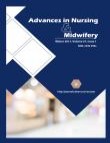Self-efficacy and compliance with treatment regimen in tuberculosis
Author(s):
Abstract:
Background And Aim
Tuberculosis is a major public health problem in the world, affecting 30% of the world’s population. Treatment of tuberculosis is the most effective strategy to stop the spread of the disease. However, non-adherence remains an important cause of treatment failure. It is believed self-efficacy may affect patient’s compliance to treatment regimen. The purpose of this study is to determine the correlation between self-efficiency and treatment compliance in tuberculosis patients attending to medical centers of Kurdistan University of medical sciences Kudistan, Iran.Materials And Method
A descriptive-correlational design was used. The sample of the study consisted of 161 tuberculosis patients attending to health centers in Kurdistan province. Data were collected using a self efficacy questionnaire and the review of patients'' medical records. he validity of the questionnaires were determined by 12 experts through the content validity and formal validity methods. The minimum index of content validity for self-efficiency questionnaire was calculated to be 75.5 percent and that of compliance was 83.5 percent. The reliability of the questionnaires was determined using the Krunbach''s Alpha-Test. The coefficient of reliability for self-efficiency questionnaire and compliance questionnaire were 0.94 and 0.97 respectively. Data were analyzed using the SPSS 16 software.Findings
The average age for patients was 58±12 years old. 61.5 percent of studied samples were male and the rest were female. The amount of compliance by patients was moderate (average scores of 30.23) and correlated to age, marital status, job, income level, education and place of living but, its relation to gender was not statistically significant. The amount of self-efficiency of the majority of patients was moderate (41.6 percent) and it was also related to age, marital status, job, income level, education and place of living but its relation to gender was not statistically significant. There was a direct and strong correlation between self-efficiency and compliance (P<0.001, r=0.90).Conclusion
The reason why the compliance level in this study has been higher with respect to the previous similar studies could be due to the implementation of direct supervision and control system over treatment. In this study there was a significant correlation between compliance and self-efficiency which was in consistency with most studies in this field while in Hamilton (2000) no significant correlation between the two variables was reported. Given that the correlation coefficient of Pearson in this study is positive and close to 1 (P < 0.001, r = 0.90), it indicates a direct and strong correlation between the two variables of self-efficiency and compliance.Language:
Persian
Published:
Advances in Nursing & Midwifery, Volume:22 Issue: 77, 2012
Page:
26
magiran.com/p1105690
دانلود و مطالعه متن این مقاله با یکی از روشهای زیر امکان پذیر است:
اشتراک شخصی
با عضویت و پرداخت آنلاین حق اشتراک یکساله به مبلغ 1,390,000ريال میتوانید 70 عنوان مطلب دانلود کنید!
اشتراک سازمانی
به کتابخانه دانشگاه یا محل کار خود پیشنهاد کنید تا اشتراک سازمانی این پایگاه را برای دسترسی نامحدود همه کاربران به متن مطالب تهیه نمایند!
توجه!
- حق عضویت دریافتی صرف حمایت از نشریات عضو و نگهداری، تکمیل و توسعه مگیران میشود.
- پرداخت حق اشتراک و دانلود مقالات اجازه بازنشر آن در سایر رسانههای چاپی و دیجیتال را به کاربر نمیدهد.
In order to view content subscription is required
Personal subscription
Subscribe magiran.com for 70 € euros via PayPal and download 70 articles during a year.
Organization subscription
Please contact us to subscribe your university or library for unlimited access!


